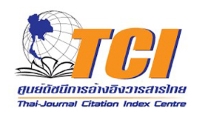JOURNAL DETAIL
The First Genetic Linkage Map of Hypsizigus marmoreus Based on SCAR Marker
Paper Type |
Contributed Paper |
Title |
The First Genetic Linkage Map of Hypsizigus marmoreus Based on SCAR Marker |
Author |
Shujing Sun, Hongchang Feng, Zhie Chen, Kaihui Hu*, and Liaoyuan Zhang |
Email |
hukaihui62@126.com |
|
Abstract: This study presents the first genetic linkage map of the H. marmoreus constructed with 100 F1 population individuals using the sequence characterized amplified region (SCAR) base on the random amplified polymorphic DNA (RAPD) and the sequence-related amplified polymorphism (SRAP) techniques. In this study, a total of 14 polymorphic markers including 11 RAPD and 3 SRAP were used for the construction of the genetic linkage map. Five SCAR markers were grouped in two linkage groups, leaving 9 markers unlinked. The total length of the two linkage groups was 86.2 cM. This is the first genetic linkage map in the family Hypsizygus, which can be a basic framework for further mapping quantitative trait loci (QTL) linked to important biological traits of the H. marmoreus. It is also an important theoretical basis for the map-based cloning of related genes and for the breeding, classification, and identification of H. marmoreus. This map provides the reference information for future molecular breeding of H. marmoreus.
|
|
Start & End Page |
504 - 511 |
Received Date |
2014-03-19 |
Revised Date |
|
Accepted Date |
2015-02-25 |
Full Text |
Download |
Keyword |
Hypsizigus marmoreus, RAPD, SRAP, SCAR, genetic linkage map |
Volume |
Vol.43 No.3 (APRIL 2016) |
DOI |
|
Citation |
Sun S., Feng H., Chen Z., Hu* K., and Zhang L., The First Genetic Linkage Map of Hypsizigus marmoreus Based on SCAR Marker, Chiang Mai Journal of Science, 2016; 43(3): 504-511. |
| View:753 Download:362 | |
RELATED ARTICLE
Comparative Chloroplast Genome Analysis of Bupleurum sikangense and Its Allied Species Revealed An Efficient SCAR Marker For Its Identification
Article ID: e2025030
Author:Kaiying Ge, Fang Li, Xuena Xie, Yanfengyang Jiang, Xiaoting Yang, Zhiye Yang, Yingyi Tan and Zhi Chao
Vol.52 No.3 (May 2025) View: 463 Download:359
Article ID: e2025030
Author:Kaiying Ge, Fang Li, Xuena Xie, Yanfengyang Jiang, Xiaoting Yang, Zhiye Yang, Yingyi Tan and Zhi Chao
Vol.52 No.3 (May 2025) View: 463 Download:359
Genetic Diversity of Nelumbo nucifera Gaertn. Cultivars Using DNA Markers and Morphological Traits
Article ID: e2024087
Author:Maliwan Nakkuntod and Sunisa Luanglue
Vol.51 No.6 (November 2024) View: 829 Download:481
Article ID: e2024087
Author:Maliwan Nakkuntod and Sunisa Luanglue
Vol.51 No.6 (November 2024) View: 829 Download:481
Genetic Relationships Between Globba expansa (Zingiberaceae) and Other Closely Related Taxa in
Thailand Using HAT-RAPD Marker Analysis
page: 896 - 906
Author:Sunisa Sangvirotjanapat, Pramote Triboun, Mark Newman and Jessada Denduangboriphant*
Vol.46 No.5 (September 2019) View: 969 Download:794
page: 896 - 906
Author:Sunisa Sangvirotjanapat, Pramote Triboun, Mark Newman and Jessada Denduangboriphant*
Vol.46 No.5 (September 2019) View: 969 Download:794
Characterization of 30 Selected Jasminum Accessions in Thailand Based on Microscopic and RAPD Fingerprinting
page: 2322 - 2337
Author:Jindaporn Phithaksilp, Nijsiri Ruangrungsi and Kanchana Rungsihirunrat
Vol.45 No.6 (September 2018) View: 971 Download:354
page: 2322 - 2337
Author:Jindaporn Phithaksilp, Nijsiri Ruangrungsi and Kanchana Rungsihirunrat
Vol.45 No.6 (September 2018) View: 971 Download:354
Sequence Characterized Amplified Region Markers for Species-specific Identification of Three Threatened Aquilaria Species
page: 1304 - 1310
Author:Hairul Azman Roslan*, Md. Anowar Hossain, Nur Qistina Othman, Cheksum Supiah Tawan and Isa Ipor
Vol.44 No.4 (October 2017) View: 827 Download:344
page: 1304 - 1310
Author:Hairul Azman Roslan*, Md. Anowar Hossain, Nur Qistina Othman, Cheksum Supiah Tawan and Isa Ipor
Vol.44 No.4 (October 2017) View: 827 Download:344
Discovery of Insertion-deletion Polymorphism for Identification on Catfish Species (Pangasianodon gigas, Pangasianodon hypophthalmus)
page: 756 - 766
Author:Kriangsak Mengumphan [a], Nantaporn Sutthi [b], Doungporn Amornlerdpison[a] and Supamit Mekchay* [b]
Vol.43 No.4 (JULY 2016) View: 806 Download:299
page: 756 - 766
Author:Kriangsak Mengumphan [a], Nantaporn Sutthi [b], Doungporn Amornlerdpison[a] and Supamit Mekchay* [b]
Vol.43 No.4 (JULY 2016) View: 806 Download:299
Identifying efficiency in herbal medicine Cinnamomum species (Lauraceae) using banding patterns and sequence alignments of rpoB, rbcL and matK regions
page: 1094 - 1108
Author:Runglawan Sudmoon [a], Arunrat Chaveerach *[a], Arisa Sanubol [a], Pansa Monkheang [a], Nantiya Kwan
Vol.41 No.5/1 (OCTOBER 2014) View: 832 Download:260
page: 1094 - 1108
Author:Runglawan Sudmoon [a], Arunrat Chaveerach *[a], Arisa Sanubol [a], Pansa Monkheang [a], Nantiya Kwan
Vol.41 No.5/1 (OCTOBER 2014) View: 832 Download:260
Development of SCAR marker for Thai fragrant rice (Oryza sativa L. var.indicacv. Pathumthani 1) mutants Induced by Low Energy Ion Beam
page: 545 - 553
Author:KantaSangwijit [a], PattanapongThangsunan [a], Rob W. Cutler [a], and SomboonAnuntalabhochaiI* [a]
Vol.39 No.4 (OCTOBER 2012) View: 838 Download:361
page: 545 - 553
Author:KantaSangwijit [a], PattanapongThangsunan [a], Rob W. Cutler [a], and SomboonAnuntalabhochaiI* [a]
Vol.39 No.4 (OCTOBER 2012) View: 838 Download:361
Copyrights © Since 2021 All Rights Reserved by Chiang Mai Journal of Science










